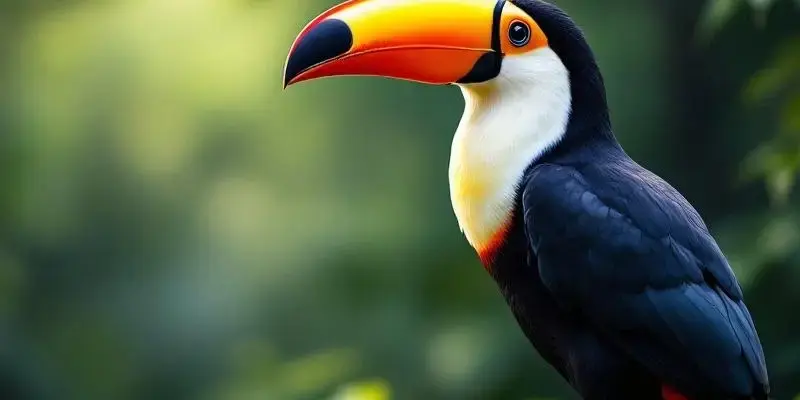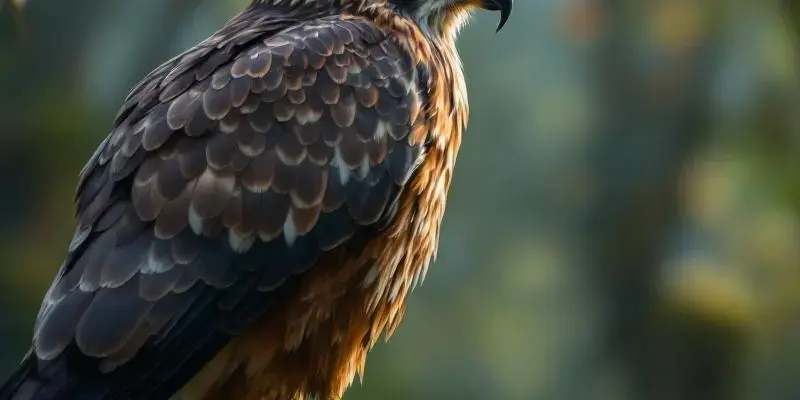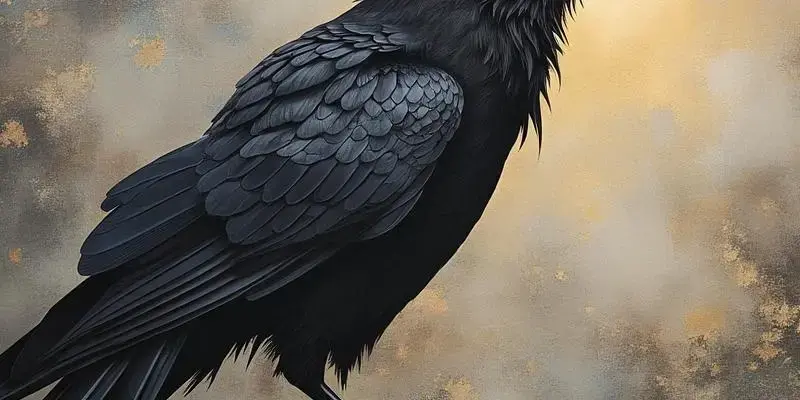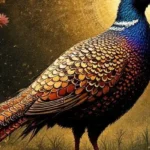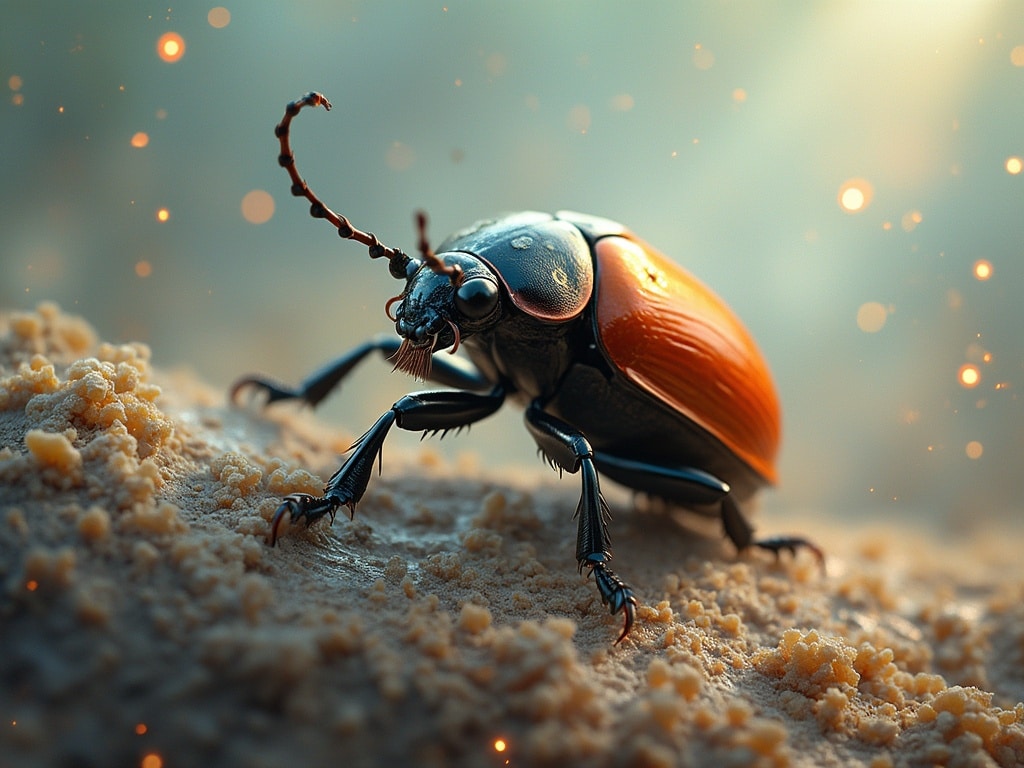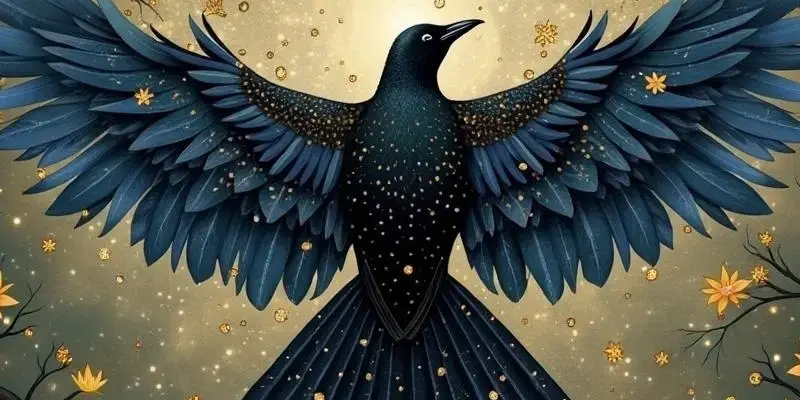Rooster spiritual meaning
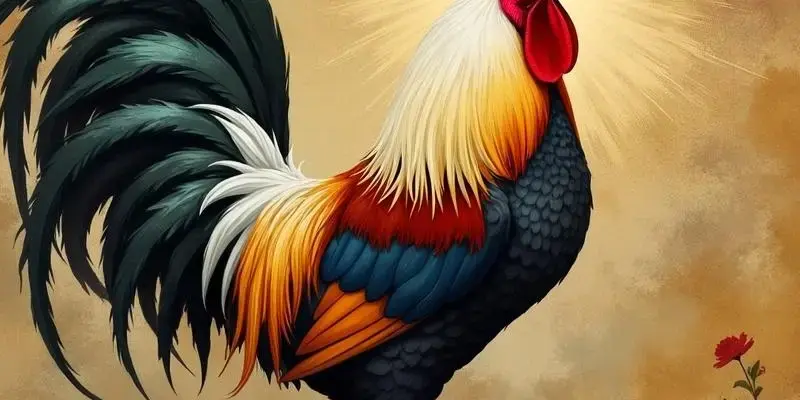
Roosters, with their proud crowing at dawn and vibrant presence, embody spiritual symbolism across cultures, representing awakening, courage, and the triumph of light over darkness. These feathered messengers transcend mere barnyard significance, carrying profound spiritual meanings from ancient civilizations to modern spiritual practices where they serve as powerful symbols of vigilance, protection, and personal transformation.
Key Takeaways
- Roosters universally symbolize solar energy and awakening, announcing dawn in cultures worldwide
- In Chinese tradition, roosters embody five distinct virtues including courage, kindness, and confidence
- Christian symbolism transformed the rooster from representing Peter’s denial to embodying spiritual vigilance
- As spirit animals, roosters teach us to use our voice with confidence and embrace our personal power
- The practice of alectryomancy utilized roosters for ancient divination and fortune-telling
The Universal Herald: Rooster as Solar Symbol Across Civilizations
The rooster has established itself as a universal solar symbol throughout human history. This connection stems from its biological behavior of crowing at dawn, literally announcing the arrival of a new day as darkness gives way to light. This natural phenomenon has inspired spiritual interpretations across numerous ancient civilizations.
In India, the rooster serves as the attribute of Skandha, who personifies solar energy in Hindu tradition. The bird’s morning call symbolizes the awakening of spiritual consciousness and the triumph of enlightenment over ignorance. Similarly, Japanese mythology credits the rooster with a divine purpose – its crowing is associated with the songs of the gods and played a crucial role in luring Amaterasu, the Goddess of the Sun, from her cave, thus restoring light to the world.
The ancient religion of Zoroastrianism particularly honors the rooster as a sacred creature symbolizing the victory of light over darkness. The rooster’s specific crowing at 3 a.m. marks what many spiritual traditions consider a powerful transitional time between night and day, connecting this bird to spiritual awakening and the manifestation of divine light.
These interpretations share a common thread despite emerging from different cultural contexts – the rooster stands as a herald of transformation, awakening, and renewal across the spiritual landscape of human civilization.
The Five Virtues: Rooster in Chinese Zodiac and Cultural Tradition
The rooster holds the 10th position in the Chinese zodiac cycle, carrying significant cultural weight in Chinese tradition. Interestingly, the Chinese ideogram for rooster is “Ki,” which shares the same pronunciation as the character meaning “favorable” – creating a linguistic connection to good fortune.
Chinese tradition attributes five virtues to the rooster, each connected to specific physical attributes or behaviors:
- Civil virtue – The rooster’s comb resembles a mandarin’s official hat, symbolizing proper conduct and civility
- Martial virtue – The rooster’s spurs represent fighting ability and readiness to defend
- Courage – Demonstrated through the rooster’s fearless conduct during confrontations
- Kindness – Shown through the protective nature roosters display toward their hens
- Confidence – Evident in the rooster’s unwavering accuracy in heralding the dawn
Beyond these virtues, roosters function as powerful protective symbols in Chinese feng shui practices. Their images are strategically placed to ward off evil spirits and negative energies from homes and businesses. This protective quality, combined with associations of fidelity, punctuality, and prosperity, makes the rooster a highly favorable symbol in Chinese cultural tradition.
From Peter’s Denial to Divine Vigilance: Christian Rooster Symbolism
Christian rooster symbolism has undergone a fascinating evolution throughout history. Initially, the rooster was associated with Peter’s threefold denial of Jesus before the rooster crowed, as prophesied in the Gospels. This connection to betrayal might have cast a negative light on the bird, but Christianity transformed this symbolism over time.
The rooster evolved from representing betrayal to symbolizing spiritual repentance and vigilance. Just as Peter’s remorse led to redemption, the rooster came to embody the call to spiritual awakening and honest self-reflection. This transformation highlights Christianity’s emphasis on redemption and second chances.
During the Medieval period, roosters became prominent Christian symbols on church weathervanes (often called weathercocks). This practice served both practical and spiritual purposes. Practically, the weathervane indicated wind direction; spiritually, the rooster symbolized the Christian attitude of watchfulness and readiness for Christ’s return.
The scriptural foundation for this vigilance symbolism comes from Mark 13:35-36: “Therefore keep watch because you do not know when the owner of the house will come back—whether in the evening, or at midnight, or when the rooster crows, or at dawn. If he comes suddenly, do not let him find you sleeping.” The rooster thus reminds the faithful to remain spiritually alert, awaiting resurrection and final judgment.
Rise and Shine: Rooster as Spirit, Totem, and Power Animal
As a spirit animal, the rooster delivers powerful lessons about self-expression and timing. Those who connect with rooster energy learn to use their voice for positive impact, turning natural expressiveness into a force for good. For naturally timid individuals, the rooster spirit animal infuses confidence, candor, and what might be called “old-fashioned gusto.”
When the rooster appears as your spirit guide, it signals that you have important work to accomplish and that now is the time to “rise and shine.” This spirit animal doesn’t tolerate procrastination or self-doubt – it calls for immediate, confident action toward your goals.
Those who identify the rooster as their totem animal typically embody several core attributes:
- Keen observance and vigilance
- Natural bravery and strength
- Honesty and directness in communication
- Pride in accomplishments
- Enthusiastic approach to challenges
As a power animal, the rooster can be called upon when you need an infusion of energy and determination. Its fiery spirit connects to immense passion and can fuel your efforts when motivation wanes. The optimal time to work with rooster energy is early morning, aligning with its natural cycle of activity and taking advantage of fresh, dawn energy for your most important tasks.
Alectryomancy: Ancient Divination Through the Sacred Rooster
Alectryomancy – derived from the Greek words “alectryon” (rooster) and “manteia” (divination) – represents one of history’s most fascinating divination practices. This ancient form of fortune-telling utilized roosters as messengers between human and divine realms.
The practice involved interpreting messages based on which grains a rooster pecked, including the timing, order, and pattern of selection. Diviners would carefully arrange grains, often corresponding to letters or symbols, in a circle. The rooster’s choices were believed to reveal answers to pressing questions or predict future events.
Romans particularly refined this practice, using roosters to divine the outcomes of political and military endeavors. A famous historical example from the 4th century AD demonstrates alectryomancy’s significant influence: Officials used this divination method to determine the next emperor’s name. When the rooster pecked at letters forming “Theod,” interpreters concluded the next ruler would be Theodosius – who indeed later became emperor.
Ancient Egyptians connected roosters with Ra, their sun god, sometimes sacrificing them in rituals seeking divine guidance. This practice highlights the cross-cultural significance of roosters as spiritual messengers capable of bridging worlds and revealing hidden knowledge, a belief that spanned from Mediterranean cultures to Far Eastern traditions.
Sacred or Sinful? Contrasting Cultural Interpretations of the Rooster
The spiritual significance of roosters varies dramatically across cultural and religious traditions, sometimes resulting in contradictory interpretations. This diversity demonstrates how spiritual symbolism often reflects specific cultural values and historical contexts.
In Jewish tradition, roosters represent gallantry and honesty – qualities so valued that Temple officers were actually given the title “Rooster” as an honorific. This positive symbolism continues in Japanese culture, where roosters symbolize courage and are allowed to roam freely on temple grounds, serving the practical purpose of waking monks for morning prayers.
However, Tibetan Buddhism presents a striking contrast, regarding the rooster as an exceptionally ill-fated symbol. In the Buddhist Wheel of Life, the rooster appears in the center alongside the hog and snake, representing one of the three poisons of existence. Specifically, the rooster symbolizes greed in Tibetan Buddhist murals, a warning against attachment and desire.
Hmong/Miao shamanic practices offer yet another interpretation, viewing the rooster as a spiritual protector. In their tradition, roosters shield shamans from evil spirits, as these malevolent forces can only perceive the rooster’s spirit rather than the human shaman. This protective function is so valued that in Southeast Guizhou, Hmong practitioners cover roosters with red cloth before holding them up for worship and sacrifice.
These varying interpretations demonstrate that spiritual symbolism is not universal but deeply embedded in cultural context, with the rooster serving as a perfect example of how the same creature can represent virtue in one tradition and vice in another.
The Attributes of the Rooster: Spiritual Qualities Embodied
Roosters embody specific spiritual qualities that have been recognized across cultures, offering valuable lessons for human development. Each attribute connects to both the bird’s natural behavior and deeper spiritual significance.
The most fundamental rooster attribute is its role as a spiritual alarm clock. Associated with dawn and the crowing that marks the beginning of a new day, roosters symbolize awakening, alertness, and the start of fresh cycles. This quality encourages mindfulness and the ability to recognize new beginnings in our lives.
Vigilance and protection form another core attribute. Roosters are naturally territorial animals that guard their flock against predators. Spiritually, this symbolizes staying alert to potential threats and dangers, both physical and emotional. The rooster teaches us to remain aware of our surroundings and protect what we value.
Confidence and leadership shine through in the rooster’s bold crowing and commanding presence. This bird doesn’t question its right to announce the day or lead its flock – it simply acts with natural authority. For humans, rooster energy can inspire self-assurance, leadership abilities, and the confidence to assert ourselves when necessary.
Courage, pride and good fortune complete
This article explores the rich spiritual symbolism of roosters across various cultures and traditions. Roosters universally represent awakening, solar energy, and the triumph of light over darkness. In Chinese tradition, they embody five virtues including courage and confidence. Christian symbolism transformed roosters from representing Peter’s denial to symbols of spiritual vigilance. As spirit animals, roosters teach confidence and proper timing. The article also covers alectryomancy (rooster divination) and contrasting cultural interpretations where roosters are viewed as either sacred or sinful depending on the tradition.
| Key Aspects | Spiritual Significance |
|---|---|
| Universal Symbol | Herald of dawn, awakening, solar energy across civilizations |
| Chinese Tradition | Embodies five virtues (civil, martial, courage, kindness, confidence) |
| Christian Symbolism | Evolution from betrayal to vigilance and spiritual readiness |
| Spirit Animal | Represents self-expression, timing, confidence, and personal power |
| Cultural Contrasts | Seen as auspicious in some traditions, negative in others (like Tibetan Buddhism) |

